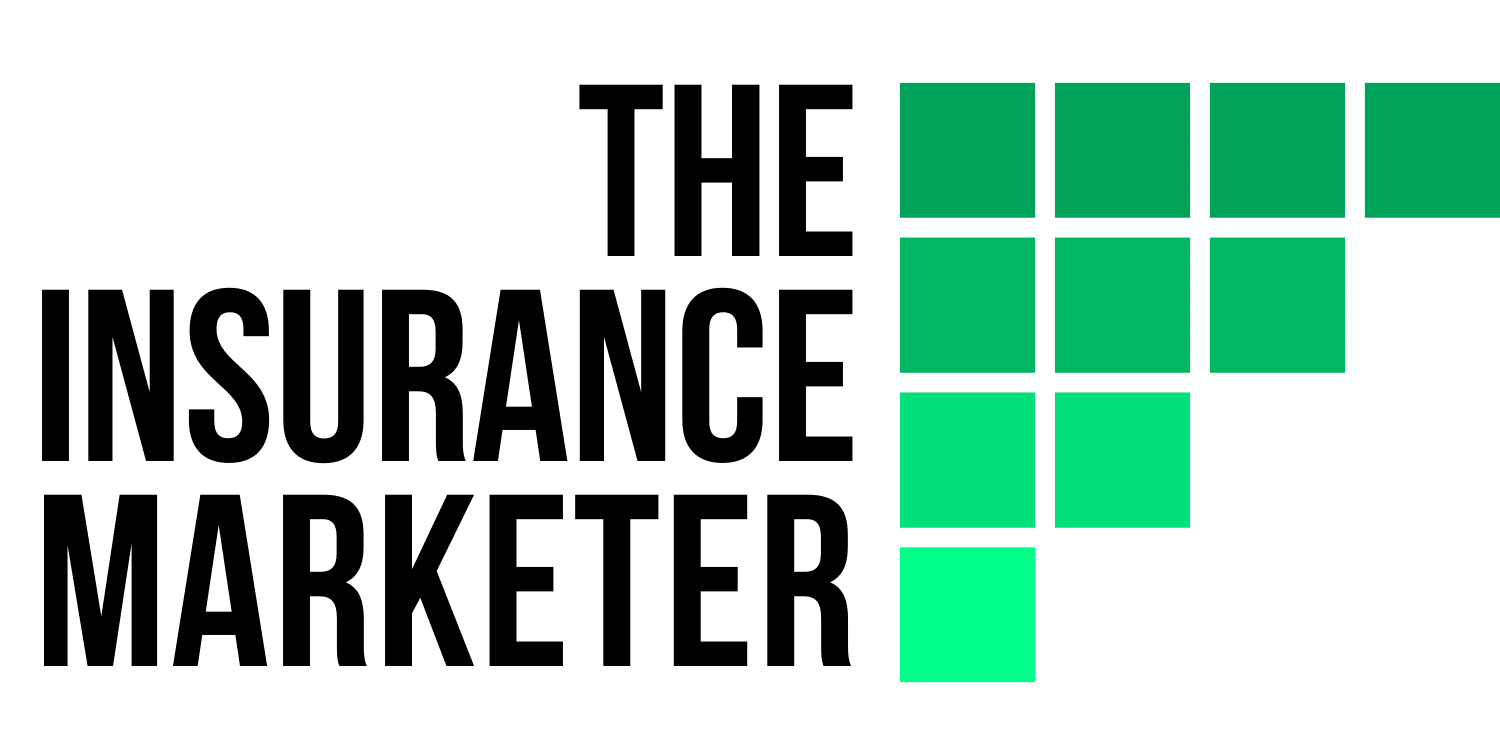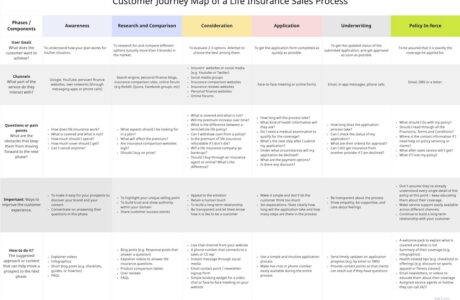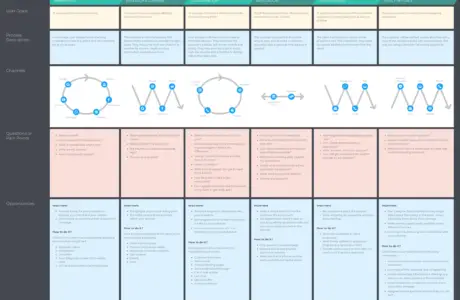With products being commoditized and fierce competition on price, service is now a crucial differentiator for insurance companies. Today’s customers expect an increasing level of personalization and will choose to buy from the brands that are able to offer services tailored to their specific needs.
It’s very important to provide contextual, responsive and customized customer service. With connected devices and the help of data analytics, insurance companies can stay ahead of the curve by providing their customers the right thing, at the right time and in the right place – with hyper-personalization.
What is hyper-personalization?
Hyper-personalization leverages artificial intelligence (AI) and real-time data to deliver the most relevant suggestions and experiences to customers at scale – based on their location, time, date, and even behavior. This approach takes personalized marketing a step further with a high level of relevance and often in an automated fashion.
Personalization vs hyper-personalization
Personalization, as we know it, depends on static information – demographics or transactional data like the customer’s name, gender, age, occupation, and purchase history. An example could be a promotional email with products similar to a customer’s previous purchase.
Hyper-personalization goes a bit further to interact with customers in real-time, with unique, timely and contextual suggestions or experiences based on users’ location, time, or behaviour.
This is done by gaining insight into customers by analyzing data collected by AI, machine learning, telematics, and IoT-enabled devices.
See this explainer video from SAP on hyper-personalization:
While personalization is static and low-touch, with the aid of technology and data analysis, hyper-personalization excels by creating an insightful, dynamic, and responsive customer experience.
Moreover, based on the data you have on hand, you can even predict what customers might want. With these insights, a company can make better decisions by providing the most relevant products and offers.
ALSO READ:
Hyper-peronalization is the new norm
According to Accenture, 82 percent of insurance customers are prepared to provide their insurers with information about their behavior if it can help them optimize their cover.
And amid the current economic turbulence, now is the time for insurers to develop more personalized, holistic and integrated solutions to be positioned for success now and in the new normal.
EY
The trend is here. Customers are expecting more from their insurers and hyper-personalization is one of the key components. Watch this video with key highlights on how to make hyper-personalization work for insurance companies as well as their customers:
What are the benefits of hyper-personalization?
Hyper-personalization is beneficial to both customers and the business:
Benefits to Customer
Today’s consumers are flooded with choices. By providing highly relevant and targeted content, hyper-personalization saves customers time and money, reduces thier effort, and eliminates information overload.
Hyper-personalization improves the customer experience with dynamic and unique messages across channels. To this end, hyper-personalization filters market noise and helps consumers make more-informed decisions.
Benefits to Business
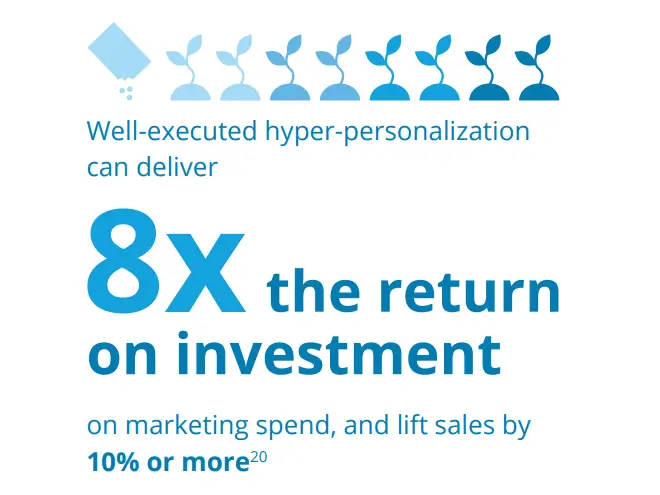
Well-executed hyper-personalization (strategy) can deliver as much as 8x the return on investment on marketing spend, and lift sales by 10% or more.
Source: Deloitte
Hyper-personalization creates great opportunities for insurers to better serve their customers at scale. The result will be an increase in customer satisfaction and loyalty, in an unprecedented way.
And when customers are happy, brands will see more engagements, better retention rate and recommendations – and in return increase in revenue.
ALSO READ:
Four steps to create a hyper-personalization marketing strategy
With data at its core, a successful hyper-personalization marketing strategy relies on data analytics – the capability of deriving insights that can convert into executable offers. .
Here are the 4 main steps for insurers to create its own strategy:
1. Collection of data across multiple channels
First thing first, hyper-personalization capitalizes on real-time data about your prospects and customers. It may include their location, time, date, and behavior. Here are the common channels for insurers to get data from by looking into:
- Their activity in your mobile app
- Their footprint on your website
- Their social media activities
- Data generated by their wearable devices
- Data tracked by telematics
Combining the vast amount of consumer data with multichannel will take hyper-personalization even further by empowering you to create one-to-one relationships with users. The more data you collect, the better insight you can get into the attitudes and behavior of your customers, and the more effective your offer will become.
2. Creating responsive and relevant offers
The next step is to tailor the most relevant offers by anticipating the needs. Information gathered from multiple touchpoints will need to be analyzed in order to gain accurate insights into the attitudes and behavior of your customers.
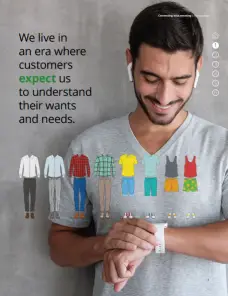
The data can be segmented to help insurers tailor digital experiences to match customer expectations. It also enables them to adapt insurance coverage and pricing to suit the specific circumstances of their customers.
For example, if an existing customer login to your app and change his/her address, chances are he/she has moved into a new home. And the most relevant offer will be a discount on home insurance.
Or if data shows the mileage of a client from a Usage-Based Insurance has decreased for the past month, the insurer can adjust the premium accordingly.
3. Delivering the offer
The insights gained provides valuable new approaches insurers can use to further refine their offerings and cross-sell other products and services. Marketers can now have new streams of data to create timely offerings to target their customers’ needs at scale.
For example, it can be an instant message, an in-app message, or an email, as long as it fits into the customer’s context. The fact is that hyper-personalization embeds so much granularity that it is sometimes referred to as “one-to-one” marketing.
And it distills the message to a point that makes customers feel they are remembered and their needs are being taken care of.
But attempting to execute it manually is impossible since data keeps coming from different channels in large quantities. To maximize the ROI, it must be done with marketing automation tools that enable the delivery at scale.
4. Calibrating with consistent testing
The beauty of digital marketing is that you can always A/B test different parameters easily. This is an iterative process that takes time.
Based on one event trigger (e.g. change of address), marketers can mix and match the execution with different offers, time of date, or channels to determine which combinations perform best.
And based on the results, you can send even more accurate messages.
Over to insurers
Customer expectation is changing at a rapid pace. A younger generation (e.g. millennials) accustomed to Amazon-level service with every interaction, demand seamless and instant experience across every touchpoint.
Insurers who invest in technology to stay competitive will enjoy lower acquisition costs, more cross-sell and up-sell opportunities, and a higher retention rate.
And in return, the investment will pay off.
Further reading
Hyper-Personalized Marketing: How to Do It Right with 3 Examples to Prove It (Instapage)
How hyper-personalization can drive customer growth post-pandemic (EY)
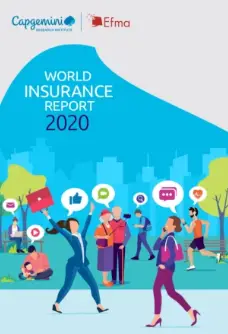
World Insurance Report 2020 (Capgemini)World Insurance Report 2020 from Capgemini and Efma explores the changing trust equation between insurers and customers, and how insurance companies can use hyper-personalization to address it. |
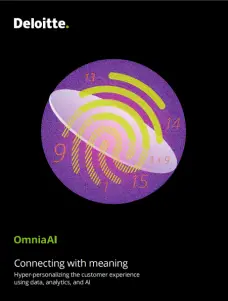
Connecting with meaningPersonalizing the customer experience using data, analytics and AIThis report from Deloitte outlines the benefits of advancing to a hyper-personalized marketing solution. It explores the ways data, advanced analytics and AI technology can be embedded throughout the customer journey, generate new levels of industry specific insights, and look at examples of hyper-personalization in action. |
